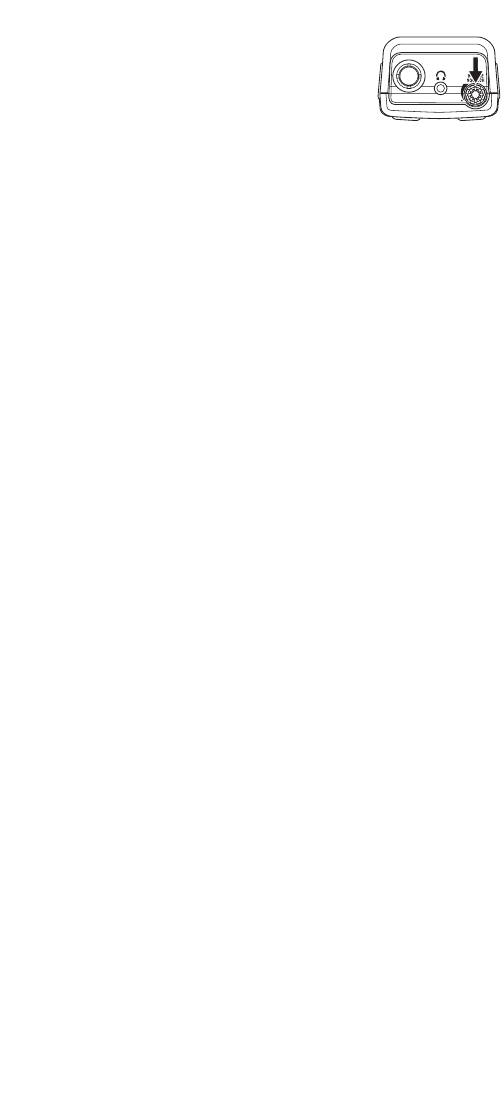
Setting the Squelch
For trunked reception, a good setting for
the SQUELCH control is in the center of the
range with the color marker pointing up.
See the illustration.
If it is set too high (CCW) in some cases it could prevent your
scanner from locking to the Control Channel reliably. If it is set
too low (CW) it will slightly delay finding the Control Channel.
The best setting is the same as for conventional reception,
and is not critical.
Receiving Trunked Systems
When you have properly programmed all the frequencies for a
trunked system, you can receive the system in several
different ways. You will find that Search, Hold, Lockout,
Scan and Delay are all similar to conventional scanning.
❖ ID SCAN lets you receive those talkgroups that you
store in Scan Lists.
❖ ID SCAN HOLD lets you selectively listen to a
talkgroup in your Scan Lists.
❖ TRUNKED SEARCH lets you hear all system talkgroup
activity (unit-to-unit I-Calls may be received as well).
This is the best way to get started.
❖ ID SEARCH HOLD works with Search mode to let you
quickly freeze reception on an interesting transmission.
Or you can manually specify a talkgroup with Direct
Entry in ID Hold.
❖ ID LOCKOUT works with Search and Scan to exclude
talkgroups that you don't want to hear.
❖ ID DELAY works with each talkgroup to be delayed for
2 seconds when the communication ends.
When receiving EDACS systems, remember that Uniden's
AFS talkgroups give you powerful flexibility. In a few key
presses, you can specify a single talkgroup, a fleet, or an
entire agency in all the above modes. Read the section
"EDACS Reception" to understand how this works.
Hint: If the scanner is not in the Trunking mode, you can
enter the Trunk Programming mode by pressing
TRUNK. Pressing TRUNK in the Trunking mode will
move to the Scan Hold mode.
50
UBC3300XLT OM 5/14/04 3:29 PM Page 50


















